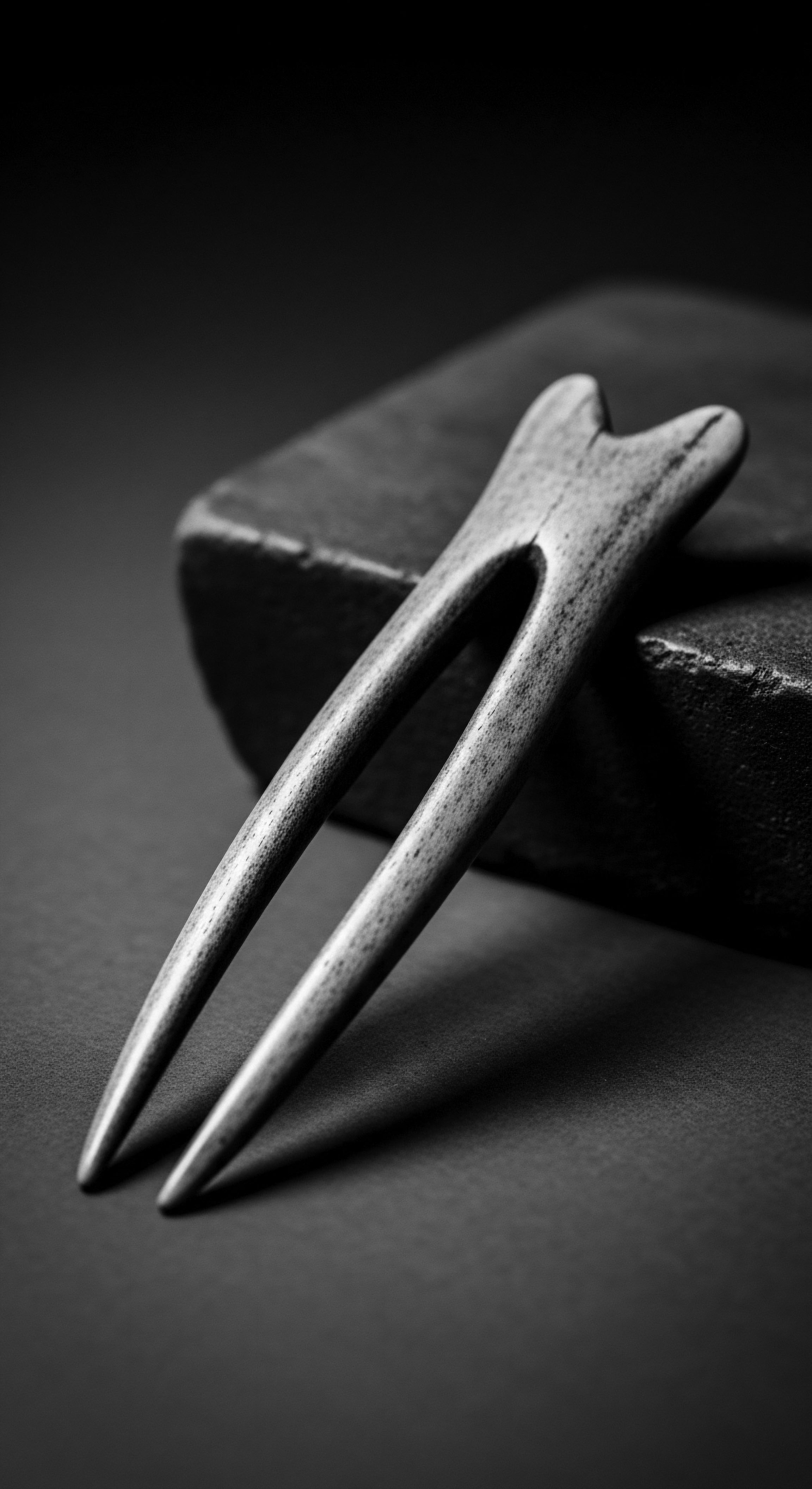
Roots
The coil and curl, the kink and wave—they are not merely strands but living archives, holding whispers of journeys spanning continents, resilience etched into every twist. For those who carry the legacy of textured hair, the story of its care is not a recent chapter; it is an ancient scroll, rich with the wisdom of those who came before. When we inquire into how ancestral hair rituals safeguarded these precious fibers, we are not asking a simple question of mechanics.
Instead, we seek to understand a deep connection to lineage, to the earth, and to the very spirit of self that has always found voice in our crowning glory. These practices, honed over generations, reveal an intuitive science, a profound respect for nature’s offerings, and a testament to enduring cultural identity.
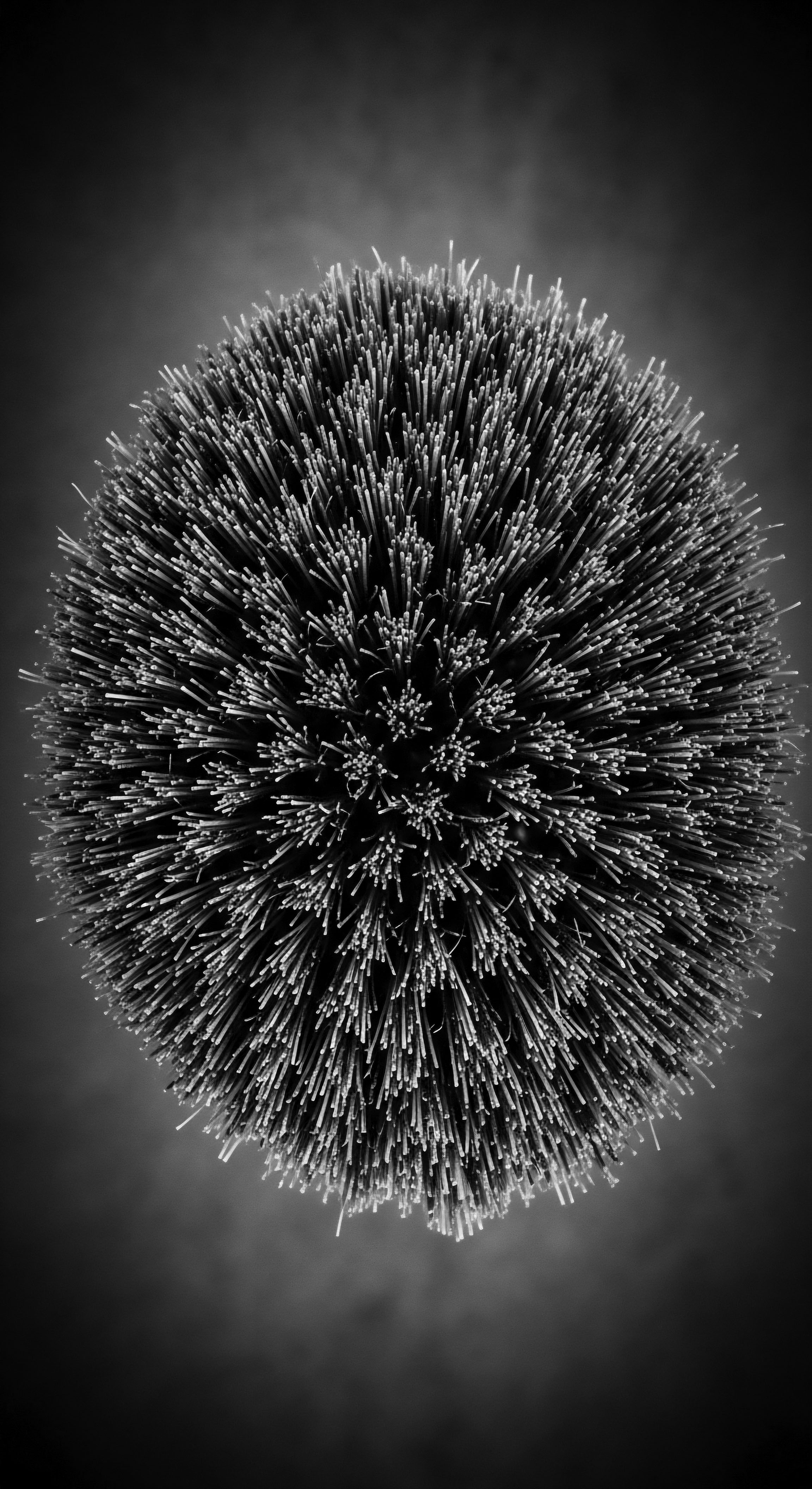
What is Textured Hair’s Ancestral Structure?
To truly grasp how ancestral practices protected strands, one must first appreciate the inherent architecture of textured hair itself. Unlike straight hair, which typically grows from a round follicle, textured hair often emerges from an elliptical or oval-shaped follicle, causing it to coil and bend as it grows. This helical structure, while uniquely beautiful, also presents distinct characteristics. The points of curvature along the strand can be areas of reduced strength, making it more susceptible to breakage if not handled with care.
The cuticle layer, the outermost protective sheath of the hair, often lifts slightly at these bends, allowing moisture to escape more readily. This inherent predisposition to dryness meant that ancestral care was instinctively focused on retaining moisture and fortifying the strand. It was a symbiotic relationship between understanding the hair’s natural inclinations and developing practices that honored them.
Ancestral hair rituals, far from simple adornment, were profound acts of preservation, understanding the inherent structure of textured hair and nurturing its unique needs.
Consider the Himaba People of Namibia. Their practice of applying Otjize, a paste of ochre, butterfat, and aromatic resin, serves as a powerful illustration of ancestral protection. This distinctive red mixture provides more than aesthetic appeal; it acts as a physical barrier against the harsh desert sun and winds, effectively sealing moisture into the hair and scalp. This centuries-old method, rooted in the environment and resources available, directly addressed the moisture retention challenges inherent to textured hair, offering a tangible shield against environmental aggressors.
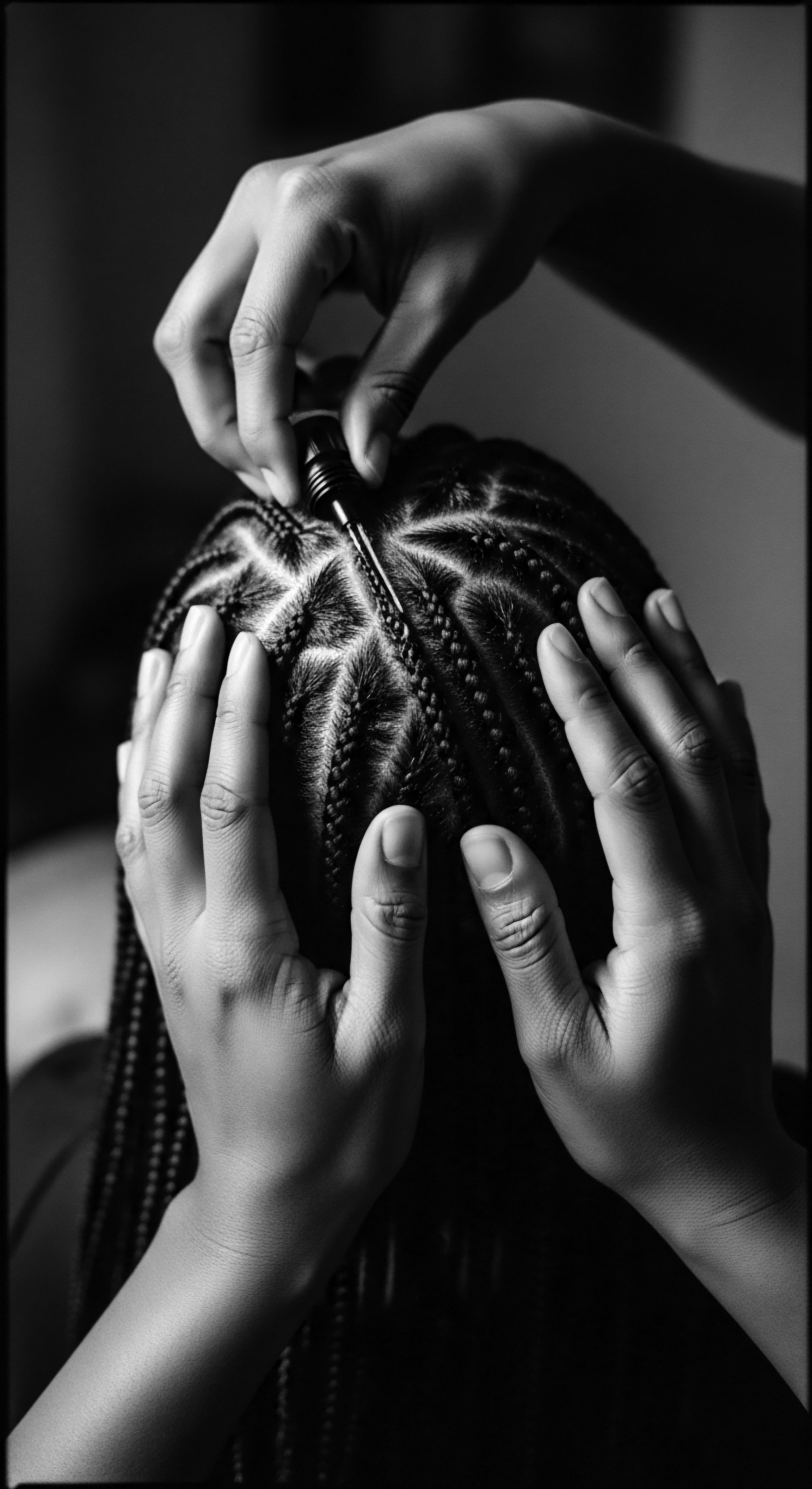
How Did Ancient People Identify Hair Types?
While modern classification systems categorize textured hair into numerical and alphabetical types (3A, 4C, etc.), ancestral communities possessed their own nuanced nomenclature. This understanding was often tied to lineage, geographical location, and community roles. Hairstyles themselves served as visual markers, signaling a person’s age, marital status, social standing, or tribal affiliation.
The language of hair was deeply embedded in social fabric, reflecting a collective knowledge that went beyond mere aesthetics. For instance, the intricate braided crowns of the Mangbetu People of Congo not only symbolized wealth and status but required specific handling to maintain their sculptural form, implicitly understanding the hair’s coiled nature.
- Coiled Forms ❉ Terms to describe tightly wound spirals.
- Wavy Patterns ❉ Language for looser, undulating shapes.
- Kinky Textures ❉ Descriptors for dense, zigzagging strands.
The relationship between hair and identity was so strong that during periods of extreme adversity, like the transatlantic slave trade, the forced shaving of hair was a deliberate act of dehumanization and cultural erasure. Yet, despite these brutal attempts to strip individuals of their heritage, traditional practices persisted, often adapted to new, harsh realities. Braiding, for example, became a means of maintaining cultural continuity, even transmitting coded messages and mapping escape routes to freedom. This profound connection underscores that hair protection was never solely about physical preservation, but also about safeguarding spirit and identity.
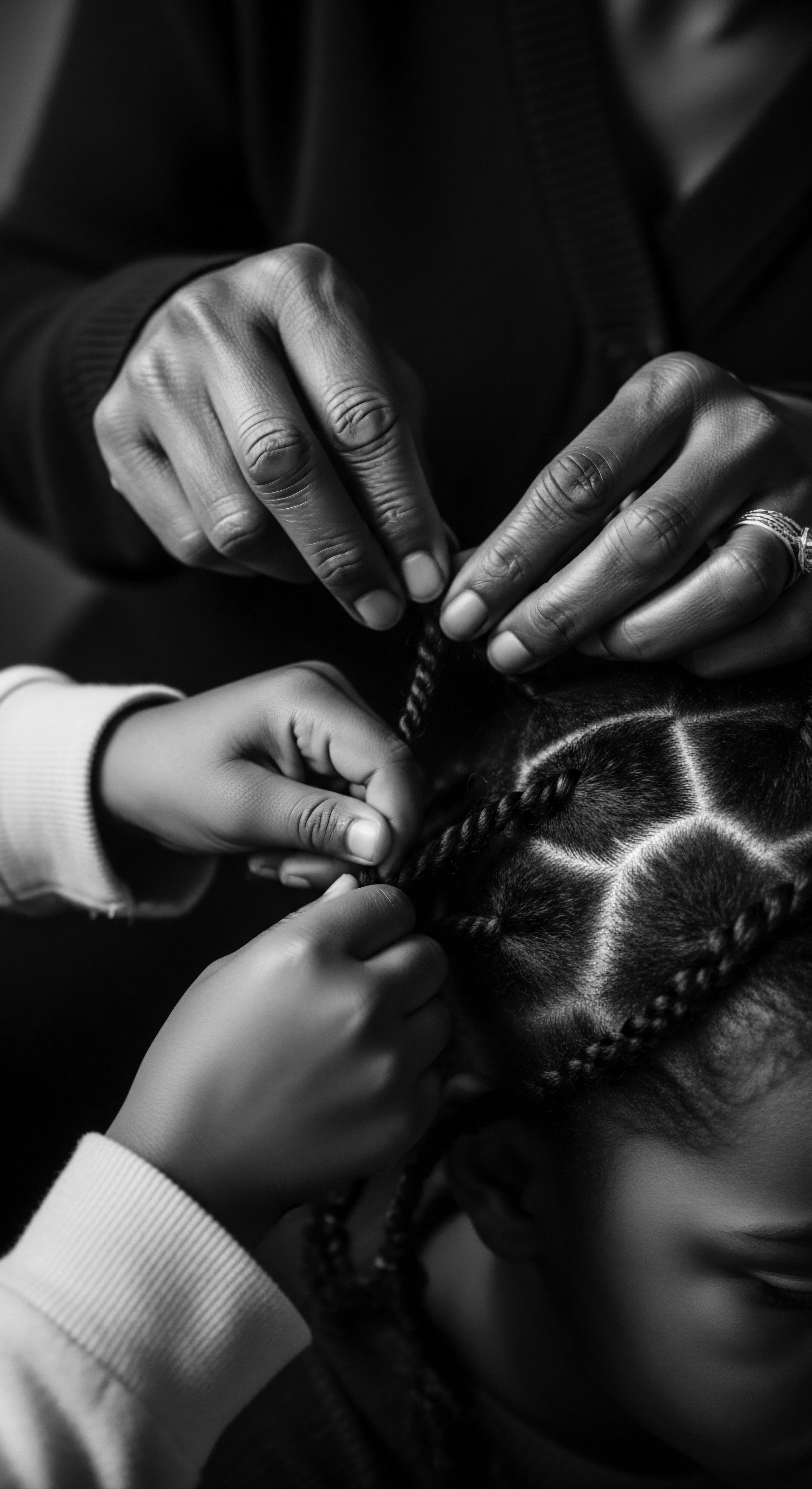
Ritual
The act of caring for textured hair, across diverse ancestral communities, was seldom a hurried task. It was, rather, a deliberate engagement, often communal and steeped in intention, transforming simple acts into meaningful rituals. These rituals served as the tender thread connecting individuals to their heritage, offering protection that extended beyond the physical strand to the very essence of community and well-being.
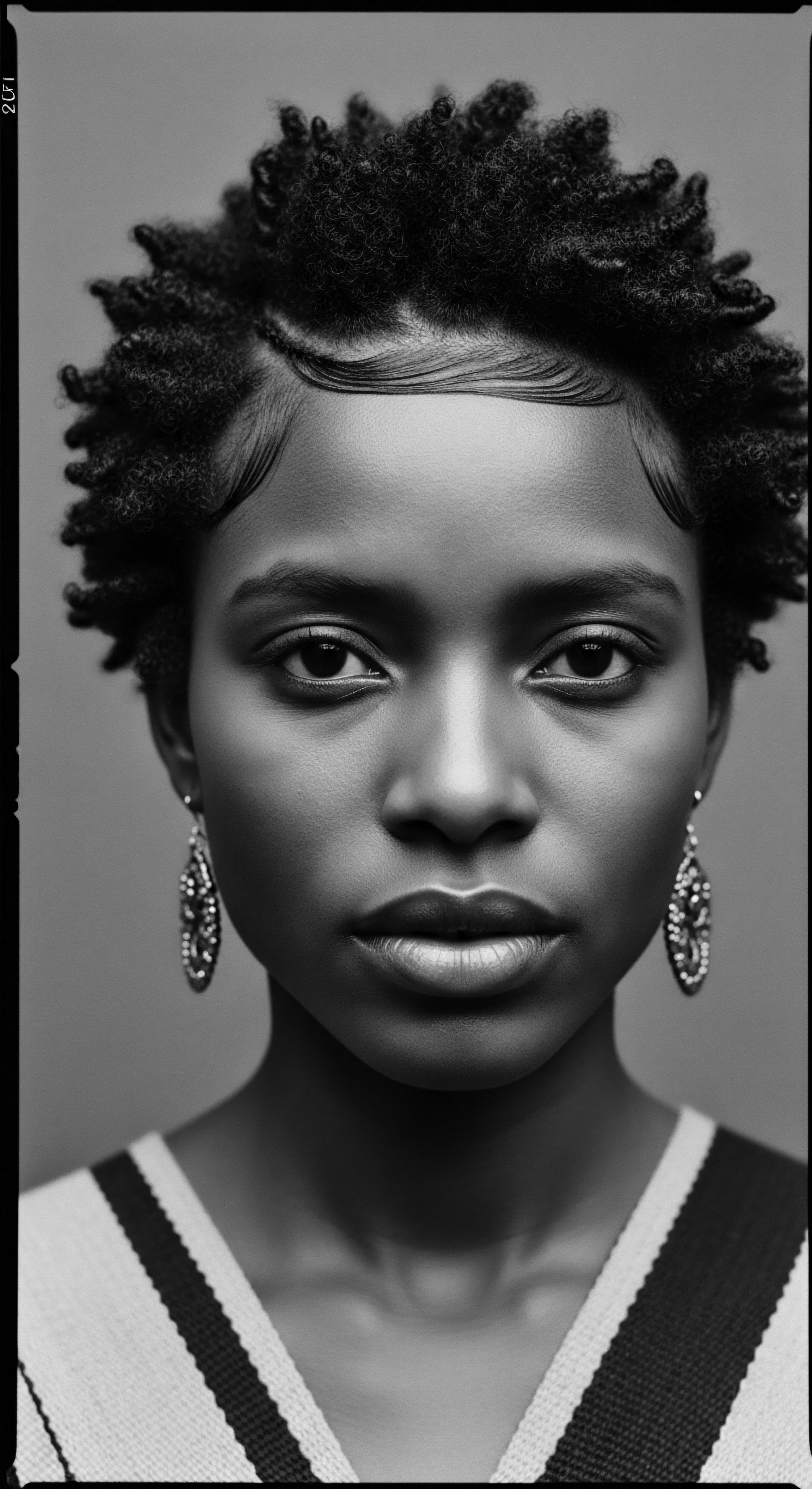
What Traditional Methods Protected Hair from Damage?
From the meticulous art of coiling and braiding to the deeply ingrained practices of oiling and cleansing, ancestral wisdom intuitively recognized the vulnerability of textured hair to dryness and mechanical stress. Protective styles, in their myriad forms, stand as a testament to this understanding. Braids, twists, and various forms of updos were not merely fashionable expressions; they were sophisticated methods to minimize manipulation, reduce tangling, and shield the delicate ends of the hair from environmental exposure. These styles allowed hair to rest, thereby decreasing breakage and promoting length retention.
Communal hairstyling sessions, common across African and diasporic communities, served not only a practical purpose but also strengthened familial and social bonds, passing down techniques and stories across generations. This shared experience reinforced the protective aspect of the ritual, ensuring knowledge of care was preserved.
| Ancestral Practice Protective Braiding/Twisting |
| Traditional Benefit for Textured Hair Minimized manipulation, reduced tangling, shielded ends from elements. |
| Modern Reflection in Textured Hair Care Continued use of braids, twists, and weaves to retain length and prevent breakage. |
| Ancestral Practice Hair Oiling/Buttering |
| Traditional Benefit for Textured Hair Sealed in moisture, provided nutrients, protected scalp and strands. |
| Modern Reflection in Textured Hair Care Pre-shampoo oil treatments, leave-in conditioners, and scalp massages with nourishing oils. |
| Ancestral Practice Head Wrapping |
| Traditional Benefit for Textured Hair Protected hair from sun, dust, and cold; preserved styles, conveyed status. |
| Modern Reflection in Textured Hair Care Silk or satin scarves and bonnets for nighttime protection and style preservation. |
| Ancestral Practice These enduring practices highlight a timeless understanding of textured hair's needs, passed down through heritage. |

How Do Ancient Oils Nourish and Protect the Scalp?
The practice of applying oils and butters was a cornerstone of ancestral hair care. For millennia, communities relied on the bounty of their local ecosystems to create potent elixirs. In West Africa, Shea Butter, extracted from the nuts of the shea tree, served as a fundamental moisturizer, protecting hair from harsh environmental conditions and aiding in growth. Across India, the ancient system of Ayurveda recognized hair oiling as a central ritual, where oils infused with herbs were massaged into the scalp and strands.
This practice was believed to cool the scalp, fortify hair, and protect against environmental stressors. Scientific studies later validated the efficacy of such practices; for instance, a 2003 study showed that coconut oil, a staple in Ayurvedic hair oiling, could significantly reduce protein loss from hair, especially when applied as a pre-wash treatment. This ancient wisdom, rooted in empirical observation, found its validation centuries later in modern scientific inquiry.
The ritual of hair oiling, passed through generations, serves as a powerful testament to ancestral understanding of moisture retention and scalp health.
Beyond their tangible benefits, these oiling rituals were often moments of connection. Mothers would massage oils into their daughters’ hair, sharing stories and wisdom, creating a space for bonding and the transmission of cultural knowledge. This communal aspect reinforced the holistic nature of ancestral care, where physical nourishment was intertwined with spiritual and emotional well-being.
Cleansing, too, held a different rhythm. Before the advent of modern shampoos, various natural ingredients were employed. Yucca Root, used by Indigenous tribes in North America, produced a natural lather for cleansing and conditioning.
In other regions, clays, plant extracts, and even fermented rice water (as with the Red Yao Women of China, renowned for their long, resilient hair) were used to purify the scalp and hair, often infusing them with beneficial nutrients. These traditional cleansing methods, while different from contemporary practices, focused on gentleness and nourishment, avoiding harsh stripping of natural oils that textured hair critically needs for protection.
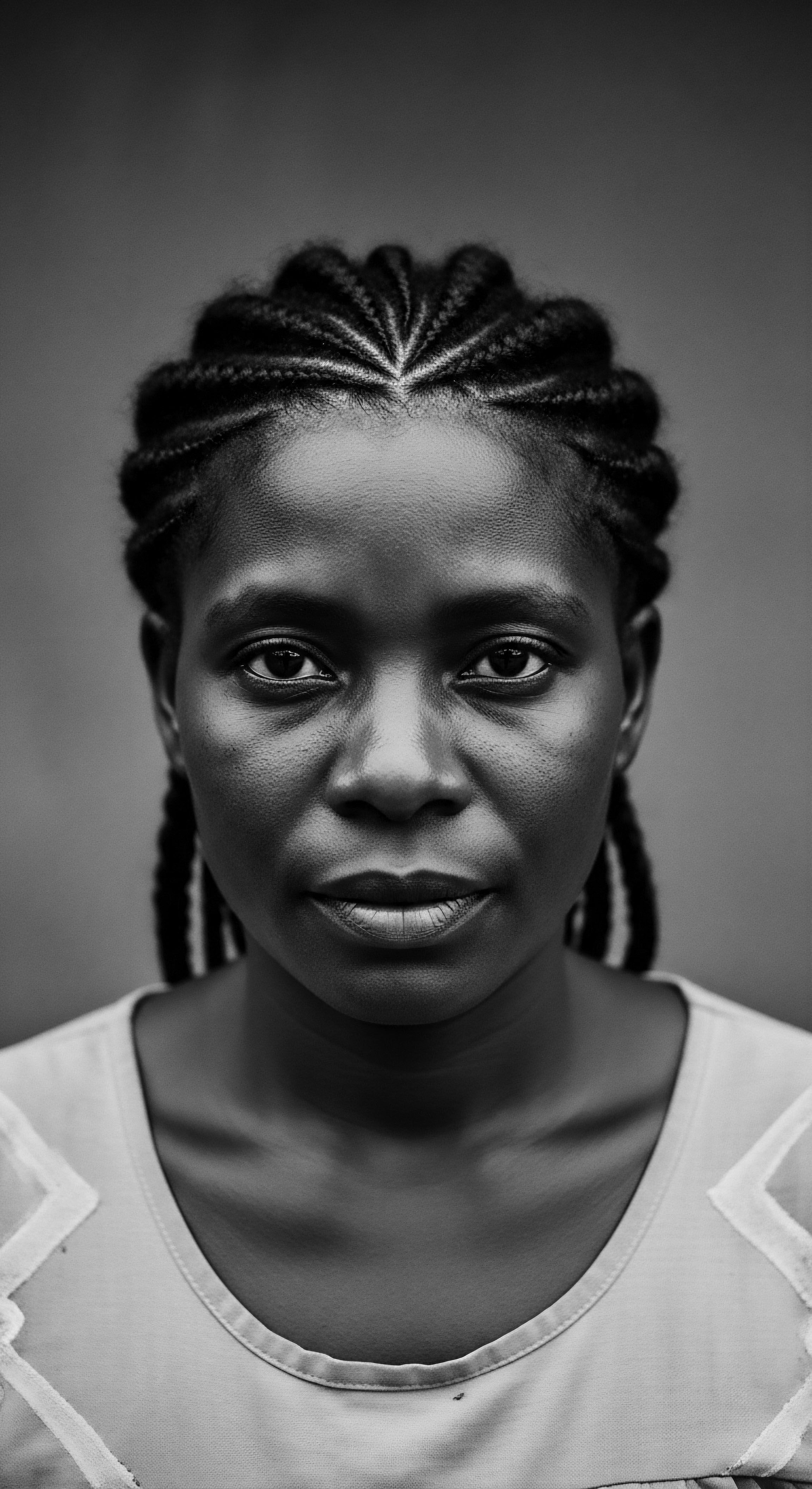
Relay
The echo of ancestral hair rituals reverberates through the contemporary practices of textured hair care, a testament to the enduring power of heritage. This relay of wisdom from past to present allows us to not only understand the scientific underpinnings of ancient methods but also to honor the cultural narratives they represent. The journey of textured hair is one of enduring identity, a complex interplay of biology, history, and collective memory.
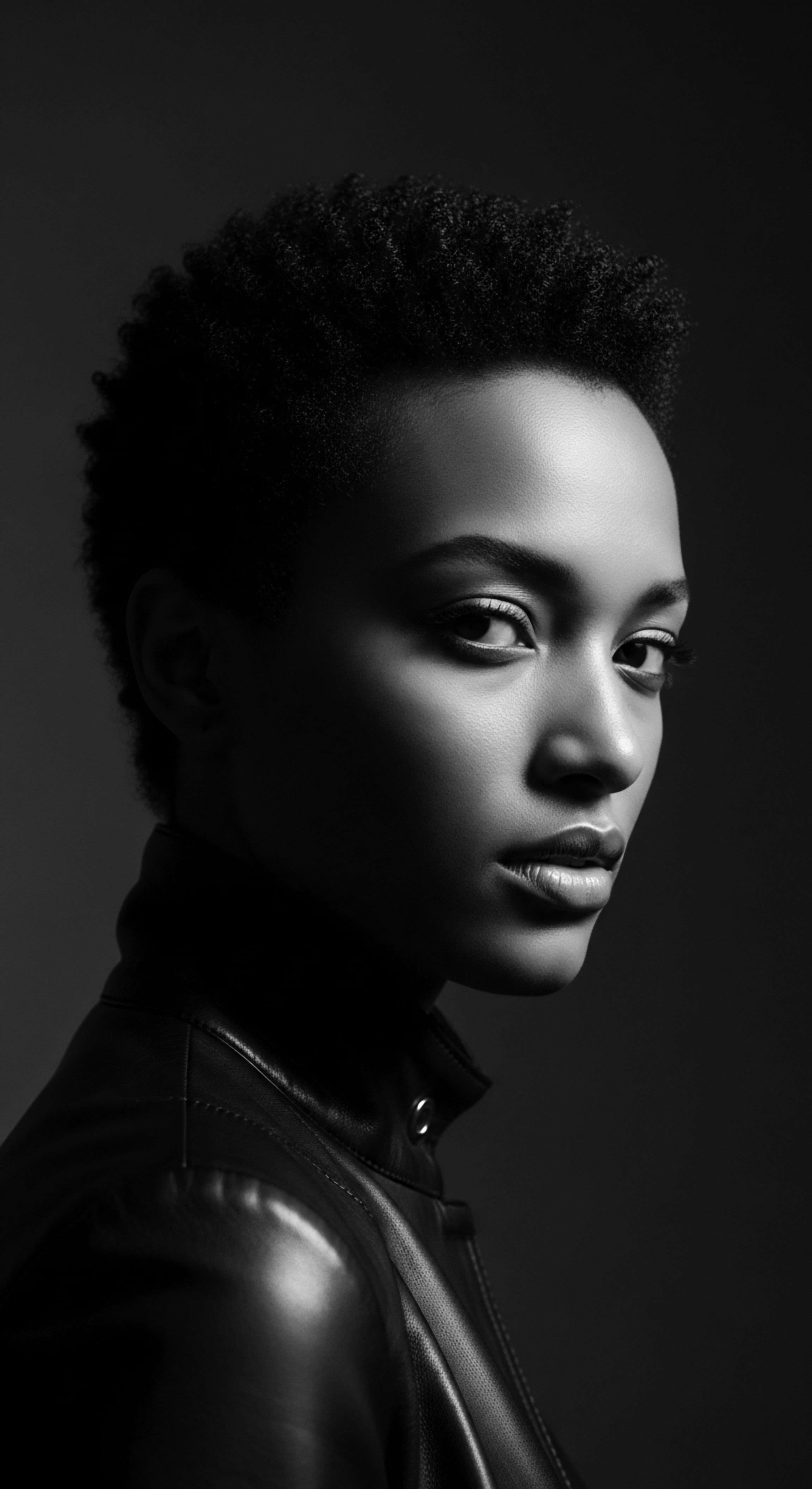
How Do Headwraps Offer More Than Cosmetic Protection?
Headwraps, for instance, are far more than a fashion accessory. Their utility as a protective measure against the elements – sun, dust, and cold – is historically documented across various African communities. Yet, their significance transcends mere physical shielding. During the horrific period of transatlantic slavery, headwraps became symbols of silent defiance and identity preservation.
Enslaved African women, stripped of their traditional grooming tools and practices, used headwraps not only to manage and protect their hair but also, in some instances, to communicate covert messages among themselves, serving as a visual language of resistance. This poignant historical example, where a seemingly simple cloth became a tool for survival and cultural continuity, highlights the profound protective capacity of ancestral practices extending into the psychological and social realms. The very act of wearing a headwrap, even when forced, was recontextualized as a reclamation of self.
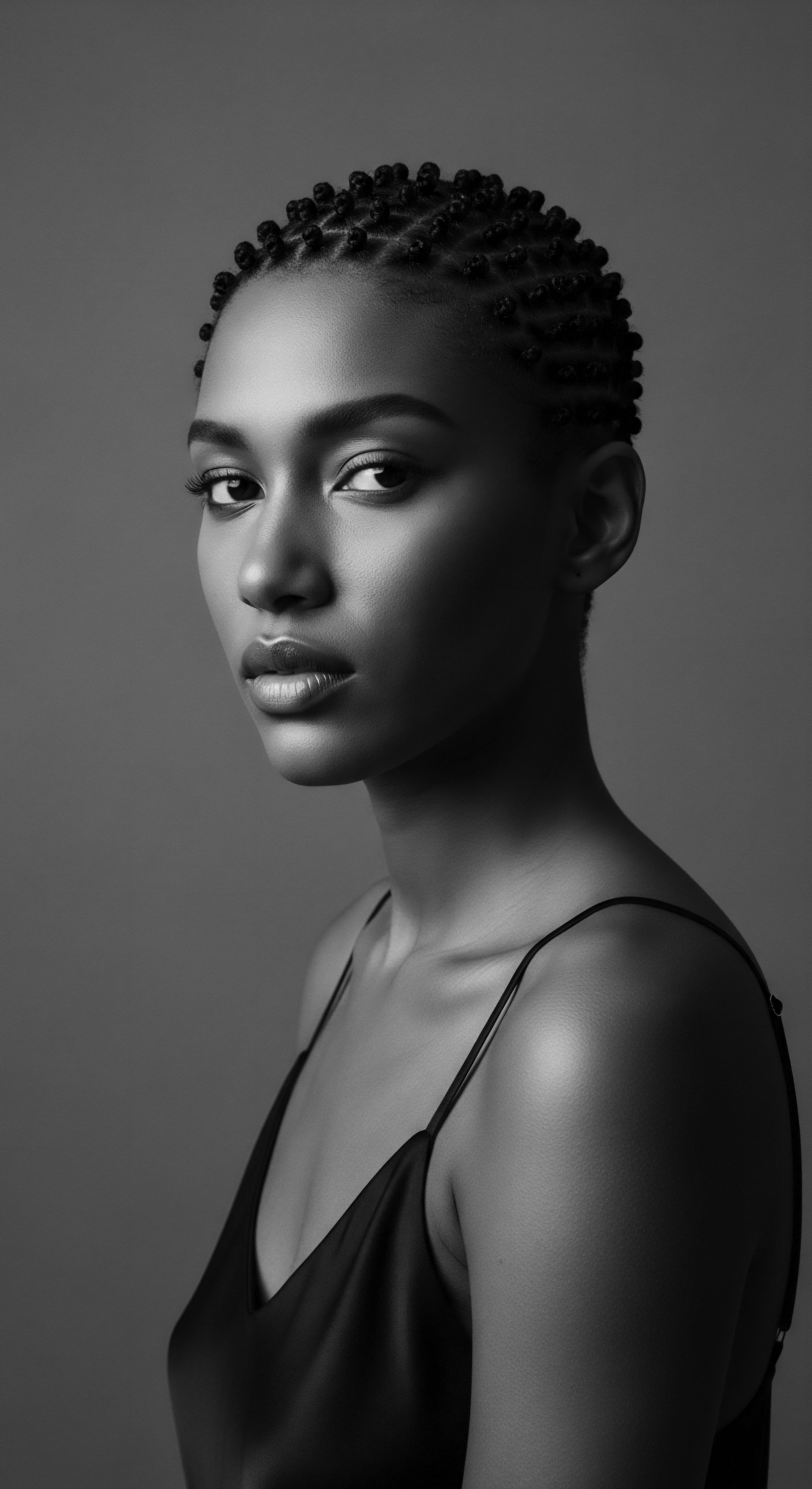
What Botanical Ingredients Protect Textured Hair From Ancestral Roots?
The pharmacopoeia of ancestral hair care is vast, drawing from the diverse botanical landscapes of Africa, the Americas, and beyond. These plant-based remedies were chosen not just for their immediate cosmetic effects but for their long-term ability to protect and fortify the strands.
- Shea Butter ❉ From West Africa, used for centuries to moisturize and shield hair from harsh environmental conditions.
- Amla (Indian Gooseberry) ❉ A staple in Ayurvedic traditions, known for strengthening hair follicles and promoting growth, rich in Vitamin C.
- Hibiscus (Hibiscus Rosa-Sinensis) ❉ Used in traditional remedies to stimulate hair growth and prevent hair fall, with amino acids that nourish.
- Yucca Root ❉ Employed by Indigenous North American tribes as a natural cleanser and conditioner.
- Castor Oil ❉ Ancient Egyptians used this oil for protection against arid climates and to promote hair growth.
Modern science, in many instances, now illuminates the mechanisms behind these ancient choices. For example, the ricinoleic acid in Castor Oil may decrease the expression of prostaglandin D2 in the scalp, a negative growth factor, thereby supporting hair health. Similarly, the saponins in Soap Nuts, historically used for cleansing, are natural surfactants that gently lift dirt without stripping. This scientific validation confirms the intuitive wisdom embedded within ancestral hair rituals, revealing that protection was often achieved through bio-active compounds that nourished hair from the inside out, supporting scalp health and reinforcing the physical structure of the strands.
The deep lineage of botanical wisdom across continents provided nuanced protective solutions for textured hair, often validated by modern scientific understanding.
The ongoing natural hair movement in contemporary society is a powerful continuation of this ancestral relay. It is a collective commitment to wearing and caring for textured hair in its unadulterated form, often drawing directly from the historical practices of protective styling, natural ingredient use, and communal celebration. This movement signifies a profound reclamation of heritage, a rejection of Eurocentric beauty standards that historically promoted damaging straightening practices, and a renewed understanding of ancestral hair care as a vital act of self-love and cultural affirmation.
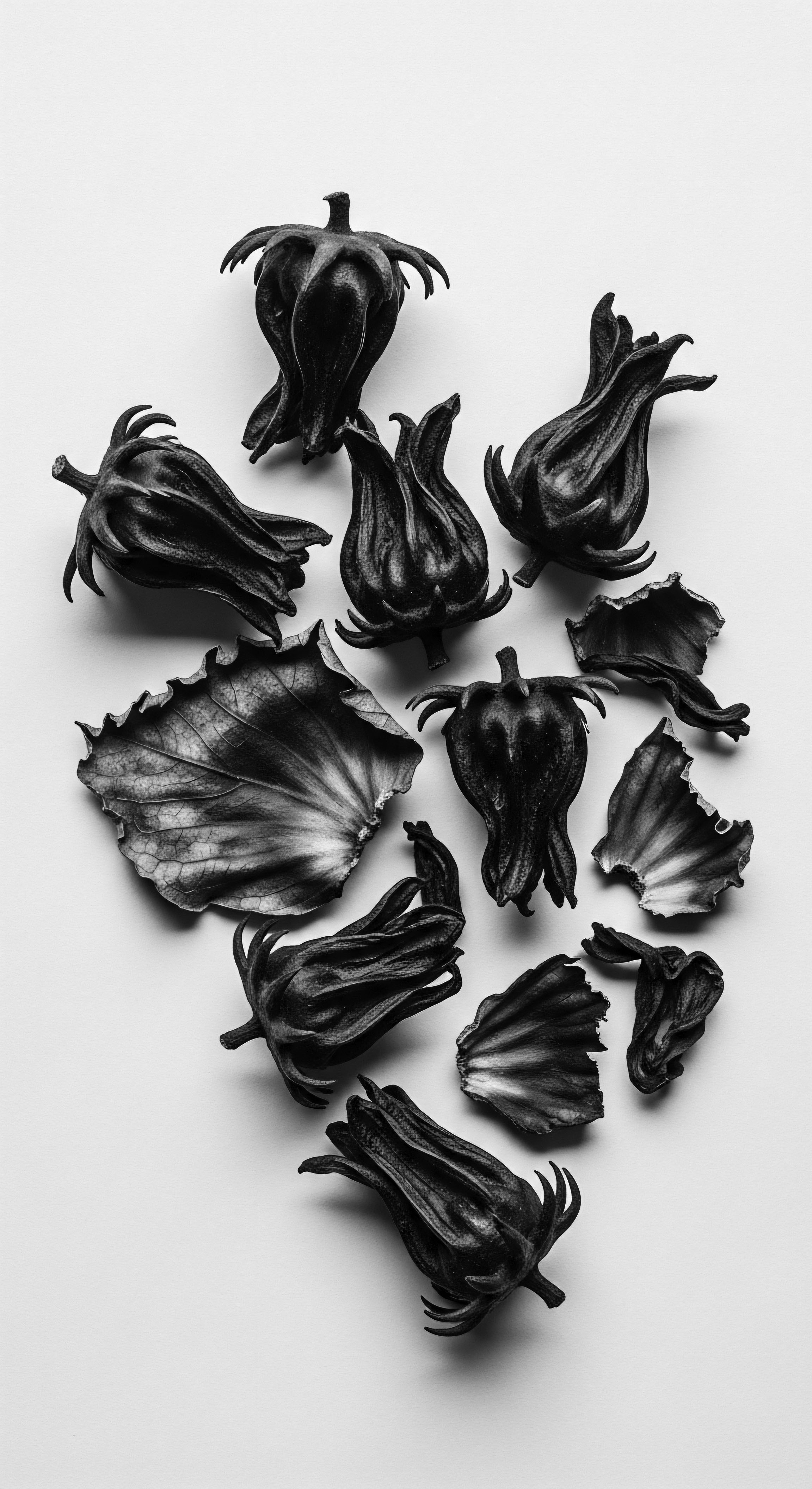
Reflection
To consider how ancestral hair rituals protected strands is to embark on a journey that transcends mere physical care. It is an invitation to witness the enduring legacy of textured hair, a vibrant testament to resilience, identity, and the boundless ingenuity of communities across the globe. From the careful crafting of protective styles that mirrored the spirals of nature to the thoughtful application of botanical elixirs, these practices were not fleeting trends. They were deeply rooted acts of reverence, born from an intimate understanding of the hair’s unique structure and its profound connection to human experience.
The wisdom passed down through generations—a whispered technique, a shared recipe, a communal braiding session—forms a living, breathing archive, continually enriching our understanding of textured hair. It reminds us that protection always held a dual meaning ❉ shielding the physical strands from harm while simultaneously guarding the spirit, culture, and stories of a people. In each coil and curl, there lives a narrative of survival, beauty, and unwavering self-acceptance, echoing the very ‘Soul of a Strand’.
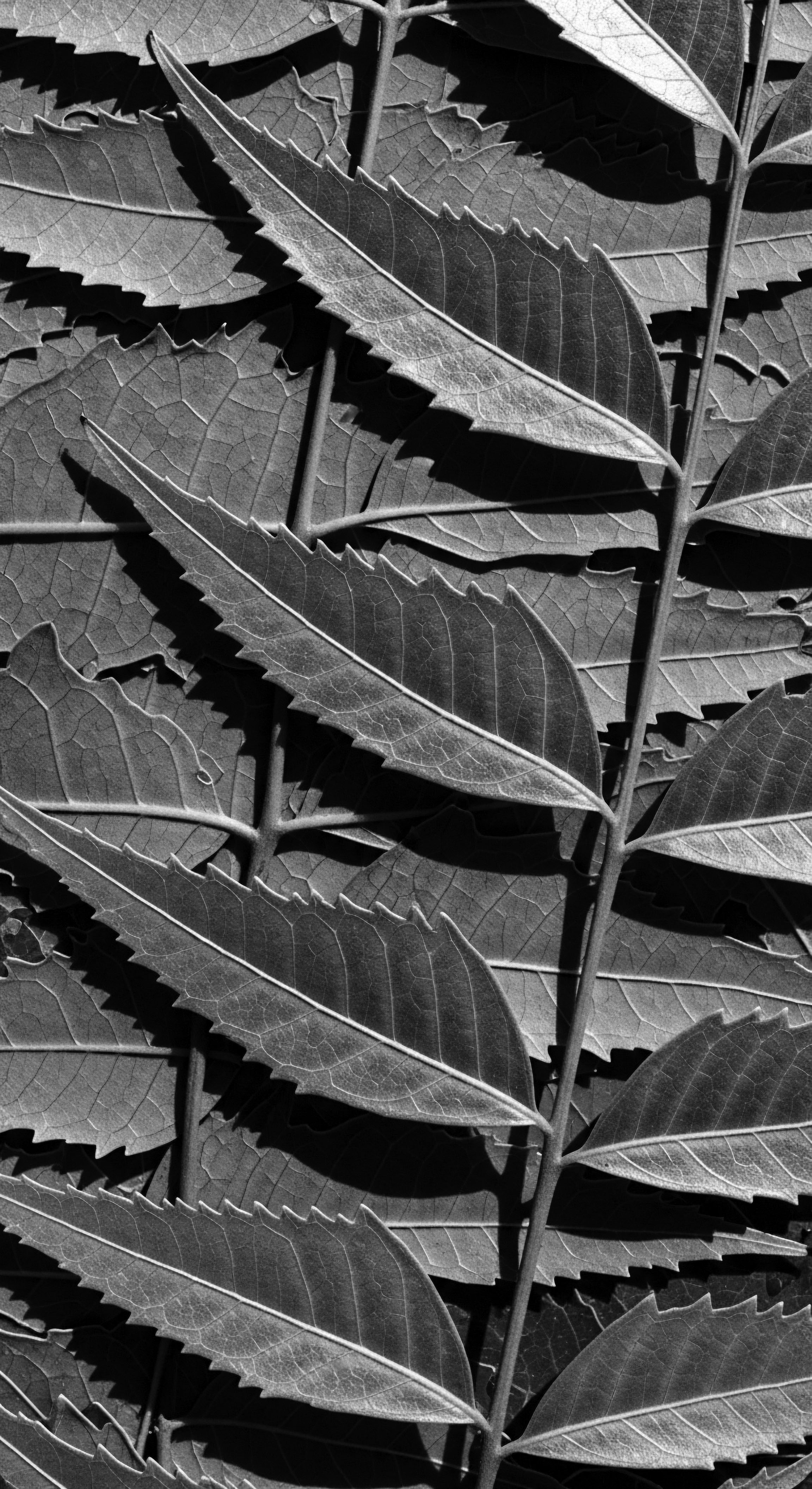
References
- Afriklens. (2024). African Hairstyles ❉ Cultural Significance and Legacy.
- Carmesi. (2022). 7 Ancient Ways To Wash And Condition Your Hair.
- CBC Radio. (2019, May 3). Boys with Braids ❉ Hair as Resistance to Colonization.
- Chatelaine. (2023, May 17). What My Mother Taught Me About My Hair.
- Healthline. (2017, October 23). 19 Herbal Remedies for Hair Growth.
- Iris Garden. (2025, April 10). Hair Oil Before Bathing – A Timeless Tradition or an Overhyped Myth?
- JD Institute of Fashion Technology. (2021, June 23). HEADWRAPS ❉ HISTORY AND EVOLUTION.
- Know Your Hairitage. (n.d.). African Culture.
- MDPI. (n.d.). Cosmetopoeia of African Plants in Hair Treatment and Care ❉ Topical Nutrition and the Antidiabetic Connection?
- Noma Sana. (2024, October 30). The History of Straightening Afro and Textured Hair.
- Orlando Pita Play. (2023, November 17). Haircare Rituals Around the World ❉ Exploring Global Traditions.
- Roots & Rituals. (2022, September 8). Ayurvedic Hair Oiling.
- Sartorial Magazine. (2025, January 13). Braids, Locs, and Beyond ❉ The Beauty and History of Protective Styles.
- Smith Scholarworks. (n.d.). The natural hair transformation ❉ a journey of resilience and resistance.
- Substack. (2025, May 4). Ancestral Hair Rituals to Nourish Your Hair and Soul.
